 Those who have followed this series on Robert Capa’s D-Day images and their subsequent fate will recall that, on June 27, 2014 I mailed to Sean D. Elliott, Ethics Committee Chairman of the National Press Photographers Association, a formal complaint about the deceptions embedded in John Morris’s longstanding narrative of Capa’s D-Day (and in the then-recent TIME/Magnum video that reiterated that fiction), naming also those other individuals and institutions who have conspired with him to sustain this myth, including Cynthia Young, current curator of the Robert Capa and Cornell Capa Archive at the International Center of Photography.
Those who have followed this series on Robert Capa’s D-Day images and their subsequent fate will recall that, on June 27, 2014 I mailed to Sean D. Elliott, Ethics Committee Chairman of the National Press Photographers Association, a formal complaint about the deceptions embedded in John Morris’s longstanding narrative of Capa’s D-Day (and in the then-recent TIME/Magnum video that reiterated that fiction), naming also those other individuals and institutions who have conspired with him to sustain this myth, including Cynthia Young, current curator of the Robert Capa and Cornell Capa Archive at the International Center of Photography.
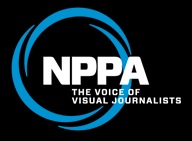 That the NPPA’s Ethics Committee can act expeditiously we know from its rapid response to World Press Photo’s recent rejection of 20 percent of entries to its annual contest for excessive digital alteration. Within days of the announcement of that WPP decision, the Ethics Committee released a statement, following that up with the announcement of a joint WPP/NPPA symposium to explore the issues.
That the NPPA’s Ethics Committee can act expeditiously we know from its rapid response to World Press Photo’s recent rejection of 20 percent of entries to its annual contest for excessive digital alteration. Within days of the announcement of that WPP decision, the Ethics Committee released a statement, following that up with the announcement of a joint WPP/NPPA symposium to explore the issues.
Yet my filing of that complaint almost nine months ago has evoked no response whatsoever from the NPPA; indeed, they have yet to show me the courtesy of acknowledging receipt thereof. (Should they attempt to deny receipt, here’s the USPS tracking information.) But I took the further precaution of emailing it to Elliott and also to Donald R. Winslow of the NPPA, who edits that professional organization’s magazine and website, while also posting it at this blog. Reports of my filing of the complaint appeared shortly thereafter at the Poynter Institute’s blog and on PetaPixel.
I therefore consider it highly unlikely that anyone in the NPPA’s administration hadn’t heard of this challenge to the Capa D-Day fable till the Christiane Amanpour interview with John Morris aired on November 11. So, on December 27, six months after I filed my formal complaint, and six weeks after Morris used his CNN appearance to revise radically his account of what happened to Capa’s films in LIFE‘s London darkroom on June 6, 1944, I drafted the following, toward a future post:
Hot on the heels of that CNN broadcast, NPPA editor-in-chief Donald Winslow posted on his own Facebook page — which feeds into the organization’s Facebook page — the following comment: “WTF?!?!?!? Former Picture Editor John G. Morris tells Christiane Amanpour that Capa’s ‘lost’ images may never have been shot.”
He posted a similar but slightly less pungent variant on Twitter the same day: “Former Picture Editor John G. Morris tells Christiane Amanpour that Capa’s ‘lost’ images may never have been shot.”
Apparently, Winslow and the NPPA want to pretend that the Amanpour segment on CNN marks the first time this came to their attention, and the moment this story went public. But I’m afraid that blatant con job simply won’t work. Morris’s first public recantation of the emulsion-melt narrative took place at this blog, in a Q&A published on August 3, 2014: “It appears now that I was simply mistaken about the ‘melting.'”
And I see no reason to assume that this attempted deception starts and ends with Winslow, when in all likelihood it goes all the way up the NPPA food chain — straight to its board of directors. This represents a policy decision, not a unapproved operation by underlings. These are apparatchiks acting on orders from above.
I’m no fan of the NPPA, having in December 2012 cited John Long, at that time the organization’s Ethics Committee Chair, as a sanctimonious hypocrite. Even so, I wouldn’t have expected such abjectly chickenshit behavior from the NPPA. Color me excruciatingly naïve. I have nothing but contempt for the entire lot of them, from President Mark Dolan on down. I’ll exempt the rank and file; from the evidence, much gets said and done in their name on which they’re not consulted and about which they’re not notified.
The hierarchy has ignored my formal complaint for six months; I guarantee they’ll take no action on it. And I’ll give you 10-to-1 odds that, if they ever do address this investigation publicly, they’ll kiss up to Morris, Magnum, the ICP, and everyone else involved, excusing all their falsehoods and deceptions, whitewashing the whole Capa industry. In the best interests of their membership, they won’t risk alienating influential picture agencies, publishers, museums, picture editors, and curators by biting the hands that feed them.
Mark my words: From the NPPA’s administration on down through the general membership, they know which side their bread is buttered on. Thus commerce doth make cowards of us all.
With posts on other subjects scheduled, I set that prognosis aside for subsequent review. We’ll learn shortly how my prediction played out.
The Loud Silence
The explanation for this organization’s turning a blind eye to the accumulated evidence may lie in the fact that the NPPA has a relationship to former LIFE picture editor John Morris that one would have to describe as anything but impartial. An NPPA Life Member, Morris in 1971 received the organization’s Joseph A. Sprague Memorial Award (established in 1949), which the NPPA describes, arguably, as “the highest honor in the field of photojournalism.” He’s written for News Photographer magazine and served as faculty in the NPPA’s annual “Flying Short Course.”
At its website, the NPPA refers to Morris regularly in adulatory tones as “legendary photography editor,” “the legend of photojournalism,” “photojournalism’s living legend,” “the undisputed dean of photojournalism,” “the eminence gris [sic] of picture editors,” and so on. His second wife, Margaret “Midge” Morris, who died in 1981, served as the editor of the NPPA’s News Photographer magazine from 1974 through 1976.
The NPPA also celebrates whenever one of its members receives the Robert Capa Award from the Overseas Press Club or the Infinity Award from the International Center of Photography. (In a May 23, 2008 obituary, “Cornell Capa, 90, Dies In New York,” they describe the ICP’s founder as “[t]he younger brother of infamous [sic] war photographer Robert Capa” — an infelicitous choice of words, surely.) The NPPA’s connection to the Robert Capa legend thus runs deep, another possible reason for its reluctance to question that myth.
Another County Heard From
Now the NPPA has at long last broken its silence on this matter, not by responding to my formal complaint but by publishing a story on this investigation in the January-February 2015 print edition of its official journal, News Photographer, and posting it in the digital edition thereof at the NPPA’s website. Both are available exclusively to members or subscribers, so I can’t enable your access thereto, alas — even though, in his March 13 Facebook announcement of the issue, Winslow claims boldly that it provides “the final word on Robert Capa’s D-Day negatives and the mystery of 11 images.”
In fact, at the moment I can’t even quote therefrom. Notwithstanding the fact that this article premises itself on the extensive research conducted and published at this blog, and despite my having provided that article’s author, Bruce Young, with extensive, detailed responses to a set of questions he posed to me via email, editor Winslow has refused to provide me or Ross Baughman (whose June 6, 2014 Guest Post here kicked off this inquiry, and who also answered questions from Young at length) either a PDF of the published version or access to the online version. In fact, the NPPA’s Professional Services Director, Thomas Kenniff, informed Baughman that if we wanted to read the article we’d have to purchase copies of the print edition.
Subsequently they relented on that last matter — perhaps some vestige of basic good manners and reciprocal professional courtesy kicked in. So a complimentary copy will wend its way to me via snail-mail (with the emphasis on snail, I suspect), and presumably another to Baughman. While it makes its way here I’ll provide some backstory, to contextualize my eventual comments on the piece, forthcoming once I get to read and evaluate it. (No doubt Winslow will preface the feature with full disclosure of those allegiances enumerated above.)
•
Here’s this in-house journal’s self-description, as published at the website:
“News Photographer magazine supports the efforts of the National Press Photographers Association in its role as the voice of the photojournalist by communicating news, identifying trends, delineating issues, and providing information, and recognizing the work of photojournalists. The columns and articles that appear in the monthly magazine are often cited as ‘the authority’ on topics ranging from law and ethics to technology.”
Notwithstanding its claim to function as “the authority” on those matters (for which they provide no supporting evidence — I’ve never seen it referred to as such), the magazine circulates almost exclusively to the NPPA’s membership.
Airing and Pairing
“By airing deceptive claims and pairing them with opposing claims, the journalist leaves open the question of where the truth lies. … Faced with contrasting claims, people tend to pick the more agreeable one, even when it’s factually less plausible.” — Thomas E. Patterson, Informing the News: The Need for Knowledge-Based Journalism (Vintage Books, 2013), p. 48
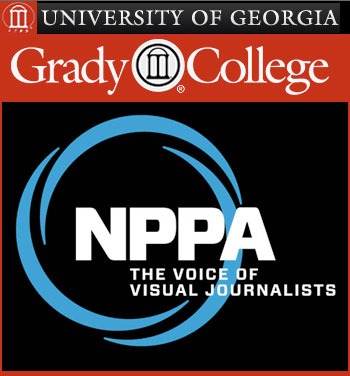 The NPPA’s current move of its headquarters to the University of Georgia’s Grady College of Journalism and Mass Communication embeds the organization within a highly reputed undergraduate and graduate academic program for journalism in general. Moreover, it affiliates the NPPA with such other distinguished organizations housed at Grady as the Georgia Scholastic Press Association for high-school journalists, the college’s own Management Seminar for College Newspaper Editors and its New Media Institute, the James M. Cox Jr. Center for International Mass Communication Training and Research, the Center for Health and Risk Communication, and the George Foster Peabody Awards, the most prestigious award in electronic journalism.
The NPPA’s current move of its headquarters to the University of Georgia’s Grady College of Journalism and Mass Communication embeds the organization within a highly reputed undergraduate and graduate academic program for journalism in general. Moreover, it affiliates the NPPA with such other distinguished organizations housed at Grady as the Georgia Scholastic Press Association for high-school journalists, the college’s own Management Seminar for College Newspaper Editors and its New Media Institute, the James M. Cox Jr. Center for International Mass Communication Training and Research, the Center for Health and Risk Communication, and the George Foster Peabody Awards, the most prestigious award in electronic journalism.
The official journal of any organization joining such august company must have, as its editor, someone cognizant of the expectations of those in the vanguard of the field of journalism as a whole. Winslow, who has served as the NPPA’s publications editor since 2003, can hardly claim ignorance of the discreditation of the “he said, she said” model by prominent figures in journalism. Surely, as a 2011 recipient of the organization’s Joseph A. Sprague Memorial Award (established in 1949) — which the NPPA describes, arguably, as “the highest honor in the field of photojournalism” — Winslow qualifies as au courant in that regard.
Thus we must consider Winslow’s decision to employ a suspect journalistic approach for this particular article, and his choice of writer to practice it on this set of issues, as calculated, not inadvertent, and definitely not ignorant or uninformed. I’ll elaborate on the discredited “he said, she said” model Winslow required of the writer in my next post.
•
(For an index of links to all posts in this series, click here.)
•
This post supported by a donation from the 20 x 24 Studio.


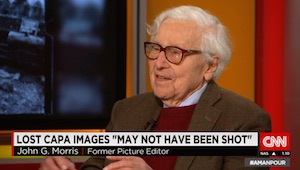
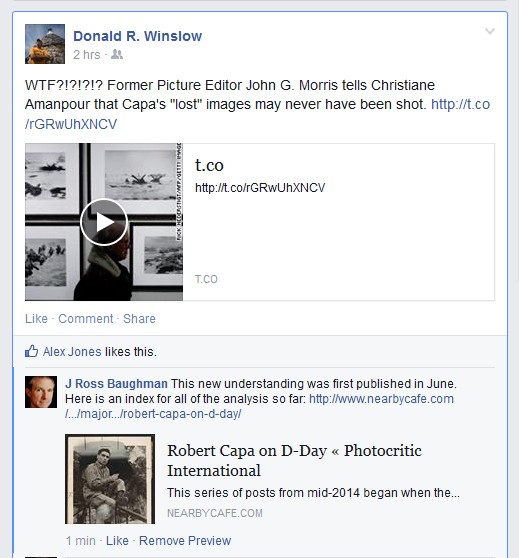
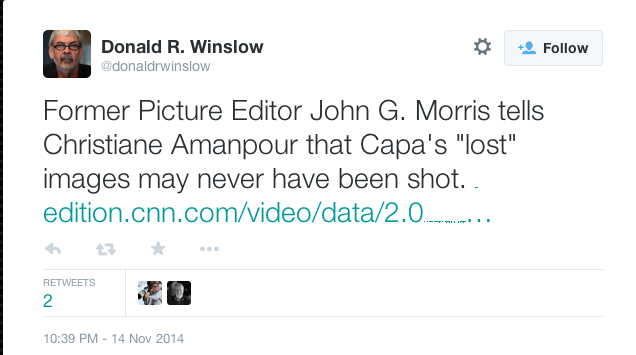

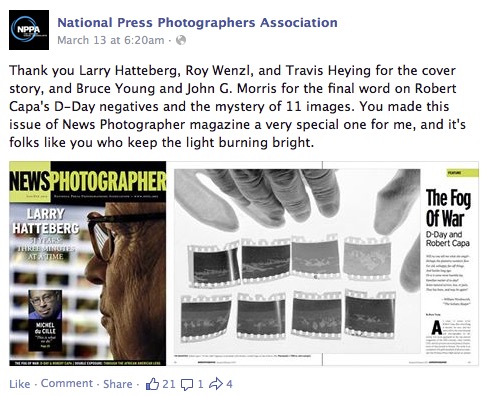
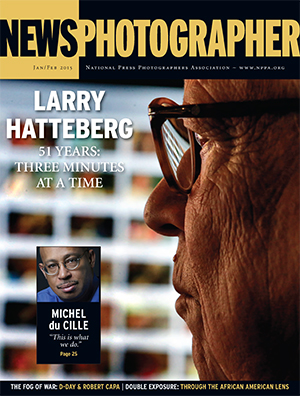






Allan … you’re a legend!
I honour you for your tenacity for some verisimilitude in the recording of the history of photography. I hold my breath for the revelations of “News Photographer” magazine.
Best
Stuart
I appreciate your use of the word verisimilitude. Works for me — if I can’t get the truth.
WPPA and their “rapid response” is a little slow, I had a friend who had won and an hour later he didn’t-he couldn’t understand any of it. I do wish WPPA would release those images, they have been several calls for this but I think WPPA wants the whole matter to go away. All in all it’s been a very bad year for them, first the 20% and then the images that won. By releaseing the images one could learn and not in the abstract.
I think you’re scrambling together World Press Photo (WPP) and the National Press Photographers Aassociation (NPPA) …
WPP likely doesn’t have the right to release the winning images that subsequently got disqualified because one was staged and another was made in a location some distance from the city that’s the declared subject of the story. But one can easily find them online.
I agree that releasing the images they also disqualified for reasons of excessive digital alteration could have an educational function. But consider the logistics:
(a) You’d have to get permission from the photographers, who would have to agree to have their names released as disqualified — hardly likely.
(b) You’d have to show the original RAW files side by side with the over-manipulated versions.
(c) You’d have to indicate, image by image, where that post-exposure alteration manifested itself.
(d) You’d have to explain how the jury detected these revisions, why they’re wrong by WPP standards, etc.
In short, you’re talking about a massive, complex editing and publishing project — hardly something we could expect WPP to undertake, much less to execute quickly. However, far from “want[ing] the whole matter to go away,” WPP seems intent on turning this into a teaching moment — that’s the point of the upcoming WPP/NPPA symposium and other related discussion. If they’d wanted to keep the lid on this, they’d have handled it behind the scenes instead of immediately going public as they did.
If your friend who initially won and then got disqualified truly doesn’t “understand any of it,” he can certainly post his own RAW files alongside the final versions at his own website, with whatever diagnostic statement WPP sent him in revoking his award, and invite debate. So could any or all of the other disqualified winners. Let me know when any of them does so.
Allan,
Wishing you well in your continuing efforts to defend what I think is not an exaggeration to call “… truth, justice, and the American way” (“American way,” sadly, tongue-in-cheek these days). I’m an outsider to the politics of the established photographic world, but no stranger to the difficulty of trying to fight misrepresentation and deception with fact, figures, and common sense.
Looking forward to what you have to say after you receive your copy of News Photographer.
David